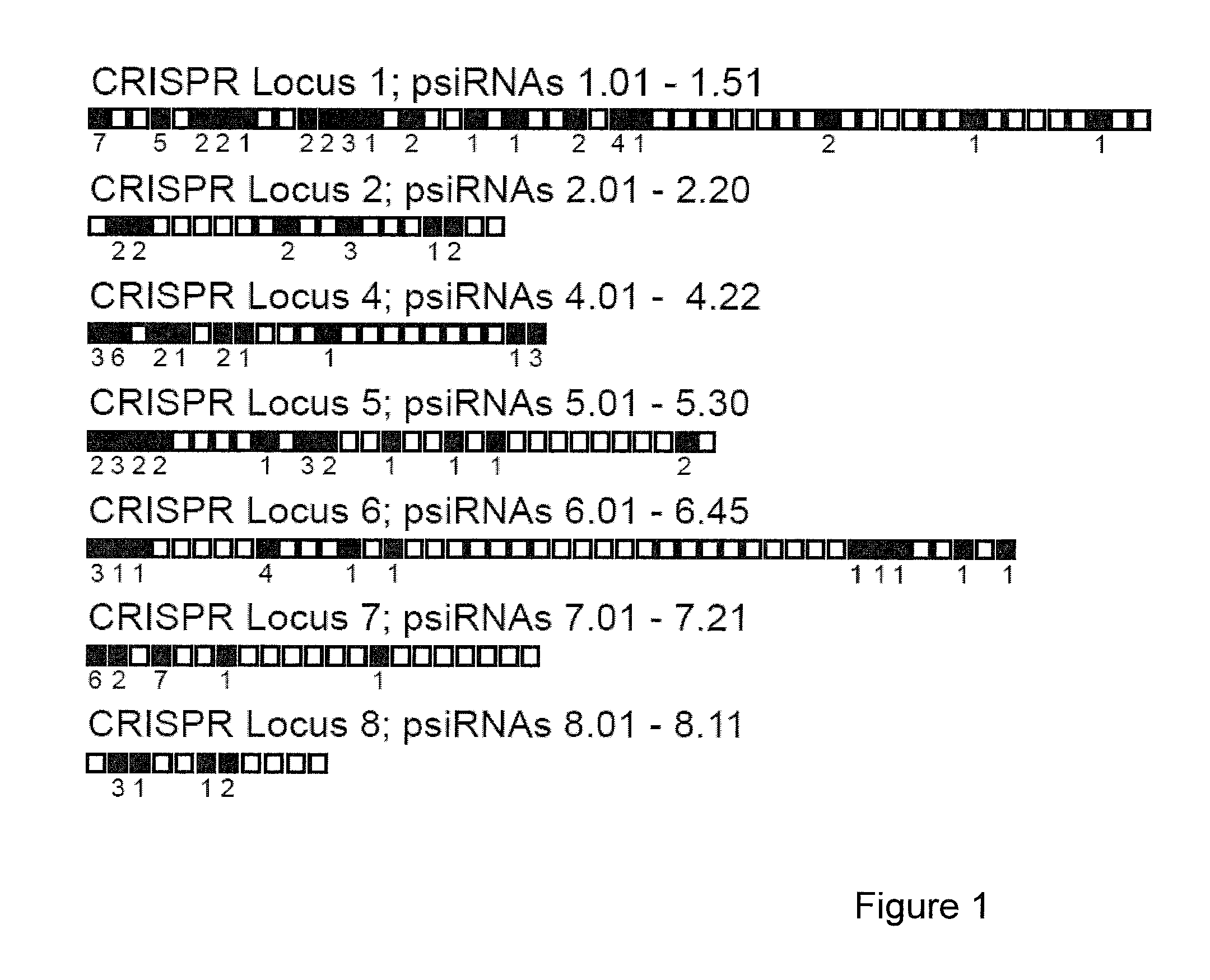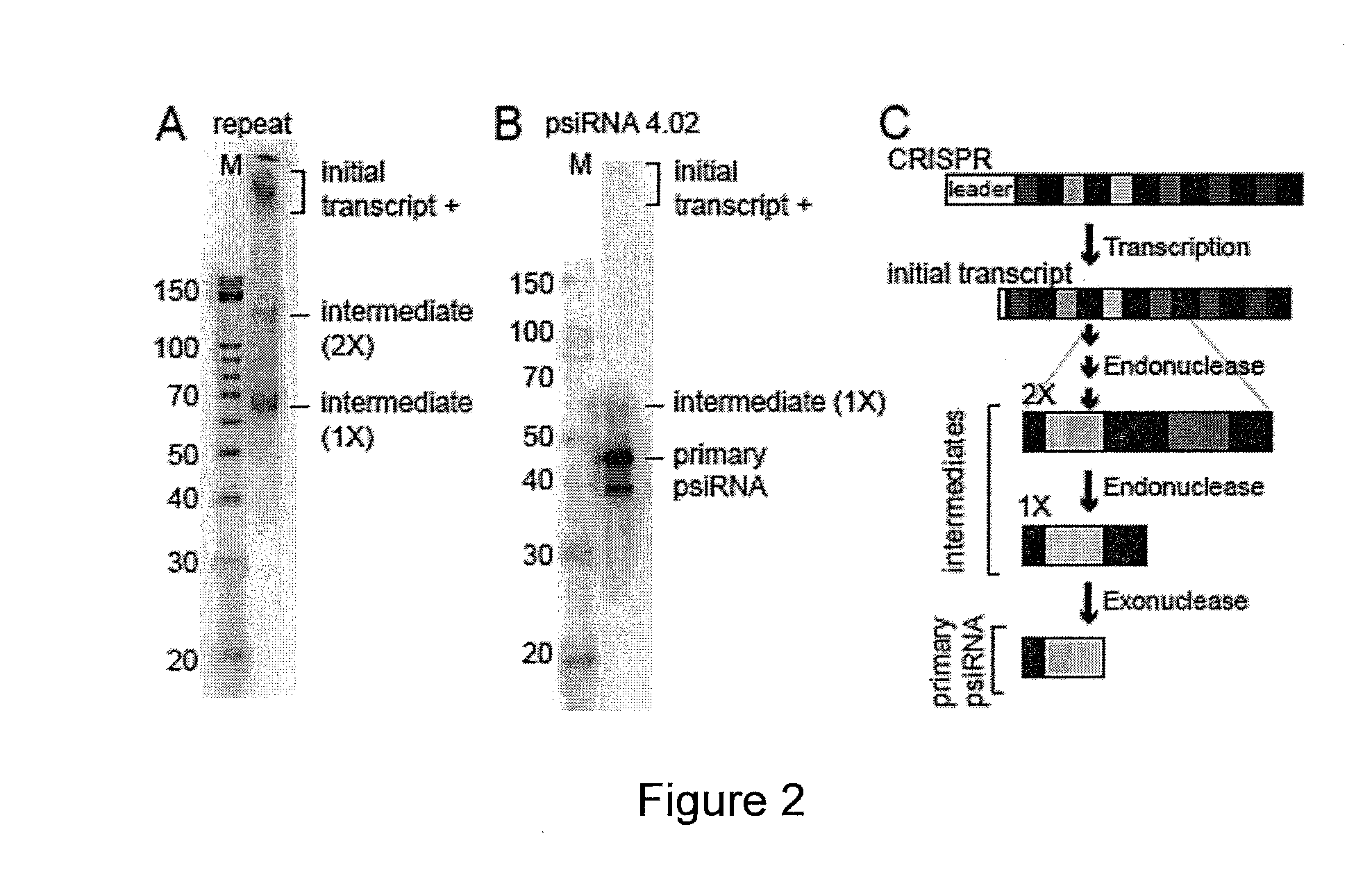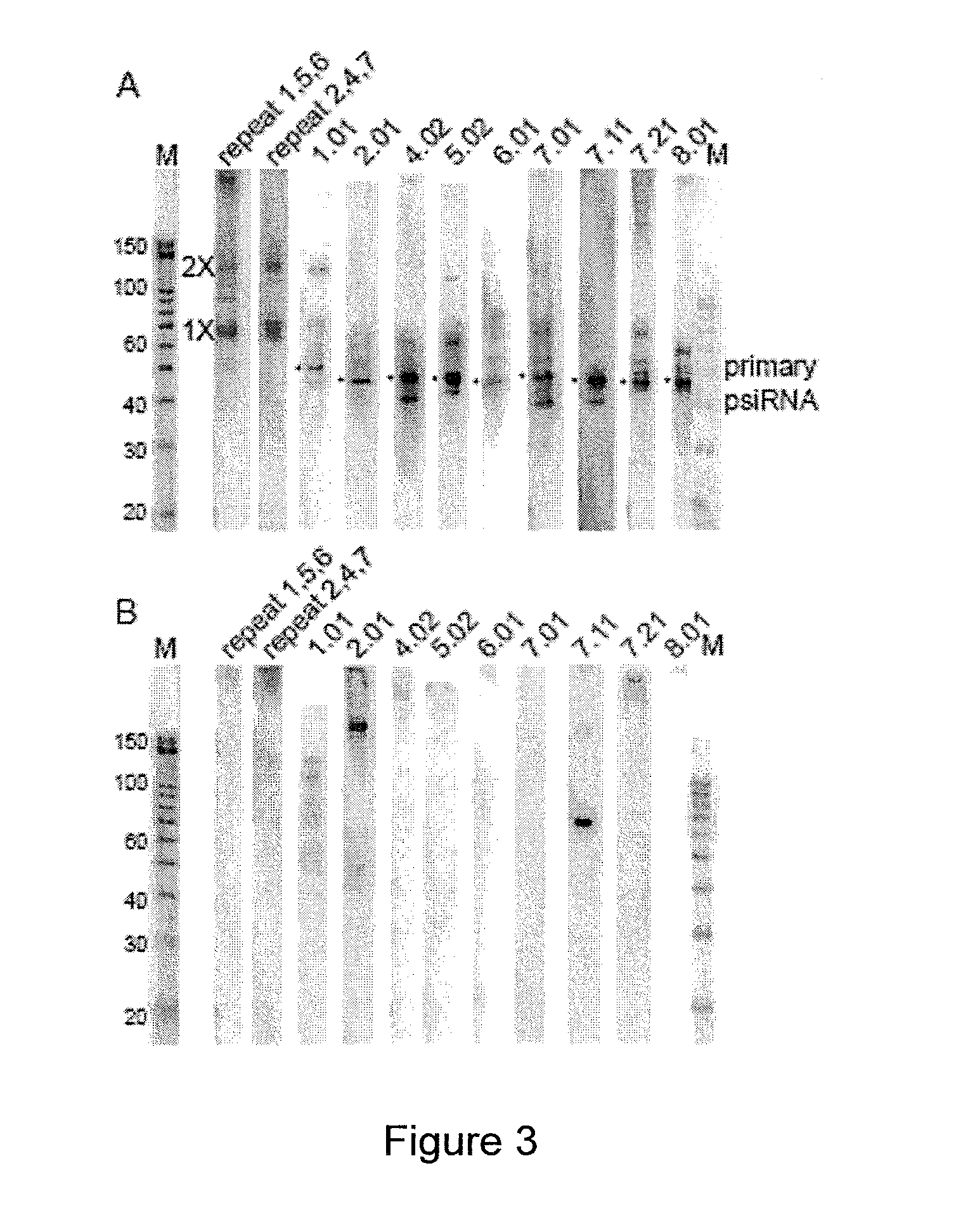PROKARYOTIC RNAi-LIKE SYSTEM AND METHODS OF USE
a technology of prokaryotic rnai-like and rnai-like, applied in the field of prokaryotic rnai-like system and methods of use, can solve the problems of hypothetical path by which crispr loci confer viral resistance and remain undefined
- Summary
- Abstract
- Description
- Claims
- Application Information
AI Technical Summary
Benefits of technology
Problems solved by technology
Method used
Image
Examples
example 1
[0109]In many prokaryotes, non-coding RNAs that arise from the CRISPR loci are now thought to mediate defense against viruses and other molecular invaders by an RNAi-like pathway. CRISPR (clustered regularly interspaced short palindromic repeat) loci contain multiple short regions of similarity to invader sequences separated by short repeat sequences, and are associated with resistance to infection by corresponding viruses. It is hypothesized that RNAs derived from these regions, termed prokaryotic silencing (psi)RNAs, guide Slicer-like complexes of partner proteins to destroy invader nucleic acids. Here we have investigated CRISPR-derived RNAs in the archaeon Pyrococcus furiosus. Northern analysis revealed multiple RNA species consistent with a proposed biogenesis pathway that includes full-length CRISPR locus transcripts and intermediates generated by endonucleolytic cleavages within the repeat sequences. However, our results identify the principal products of the CRISPR loci as s...
example 2
[0130]Compelling evidence indicates that the CRISPR-Cas system protects prokaryotes from viruses and other potential genome invaders. The system arises from clustered regularly interspaced short palindromic repeats (CRISPRs) that harbor short invader-derived sequences, and CRISPR-associated (Cas) protein-coding genes. Here we have identified an apparent CRISPR-Cas effector complex that employs small CRISPR RNAs (termed prokaryotic silencing or psiRNAs) to recognize and destroy corresponding target RNAs. The complex consists of psiRNAs and a subset of Cas proteins termed the RAMP module (or Cmr) proteins. The psiRNA-Cmr protein complexes cleave complementary target RNAs at a fixed distance from the 3′ end of the integral psiRNAs. In Pyrococcus furiosus, psiRNAs occur in two size forms that share a common 5′ sequence tag but have distinct 3′ ends that direct cleavage of a given target RNA at two distinct sites. Our results indicate that prokaryotes possess a unique RNA silencing syste...
example 3
Cleavage of Target Polynucleotides by a Cmr Complex Requires a psiRNA-Tag
[0159]A psiRNA with the wildtype tag (AUUGAAAG, wt) efficiently guides cleavage of a complementary RNA in the presence of Cmr1-6 (+proteins). The same psiRNA that is lacking the tag sequence (-tag) is unable to guide cleavage of the target. Mutating the tag sequence to its complement, UAACUUUC (comp. tag), also inactivates the complex. This indicates that the tag sequence, AUUGAAAG, is required for cleavage of a complementary RNA by the Cmr proteins.
[0160]Recombinant Cmr1-6 (500 μM each protein) was added to a 20 reaction using conditions described in Example 1. Proteins and psiRNAs (0.25 pmol psiRNA per reaction) were incubated for 30 minutes at 70° C. [32P]-radiolabeled target RNAs (0.05 pmol per reaction) were added and the reactions were incubated for 1 hour and 70° C. The resulting reaction was subject to proteinase K digest by 1 μg of proteinase K at 37° C. for 15 minutes, followed by PCI extraction and E...
PUM
| Property | Measurement | Unit |
|---|---|---|
| Temperature | aaaaa | aaaaa |
| Fraction | aaaaa | aaaaa |
| Fraction | aaaaa | aaaaa |
Abstract
Description
Claims
Application Information
 Login to View More
Login to View More - R&D
- Intellectual Property
- Life Sciences
- Materials
- Tech Scout
- Unparalleled Data Quality
- Higher Quality Content
- 60% Fewer Hallucinations
Browse by: Latest US Patents, China's latest patents, Technical Efficacy Thesaurus, Application Domain, Technology Topic, Popular Technical Reports.
© 2025 PatSnap. All rights reserved.Legal|Privacy policy|Modern Slavery Act Transparency Statement|Sitemap|About US| Contact US: help@patsnap.com



